In 2024, the landscape for dishes and plates offers more than just functional items for serving food; it extends into realms of aesthetics, durability, and sustainability, key factors that professionals in this sector must consider to cater to evolving consumer preferences. The right selection of these products not only enhances the dining experience but also reflects a commitment to quality and innovation. As trends shift towards eco-friendly materials and multifunctional designs, understanding the nuances of various materials, from classic porcelain to modern melamine, becomes crucial. This understanding ensures that offerings not only meet the practical needs of consumers but also align with their values and lifestyle, establishing a connection that goes beyond the transactional.
Table of Contents
1. Diverse categories and their applications
2. Insights into the current market
3. Essential considerations for product selection
4. Leading dishes and plates: Analysis and features
1. Diverse categories and their applications
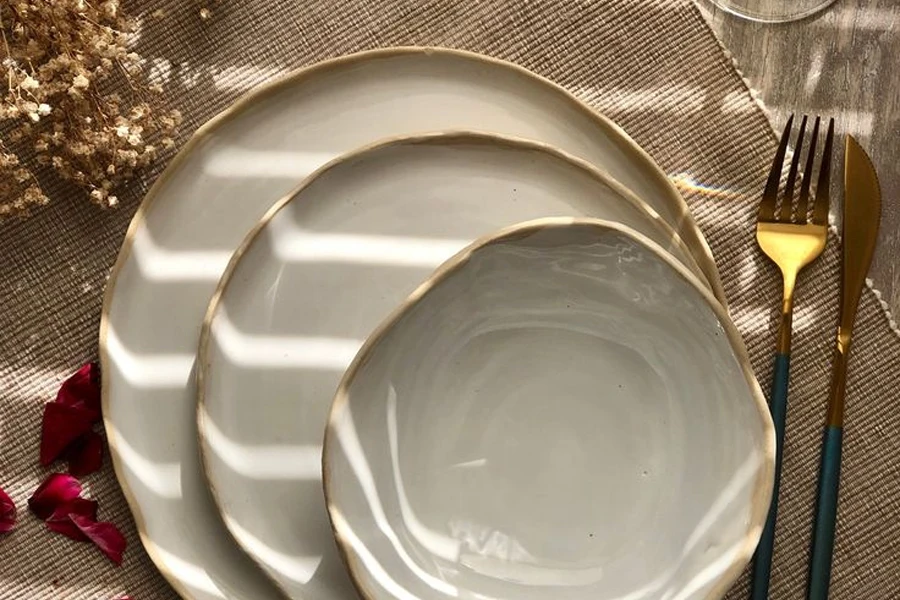
Transitioning from the introduction’s emphasis on the evolving consumer preferences and the industry’s pivot towards sustainability and innovation, it becomes evident that the choice of material and design in dishes and plates plays a pivotal role. This choice not only affects the durability and functionality of these essential dining tools but also their environmental impact and aesthetic appeal.
Material matters
The selection of materials for dishes and plates encompasses a broad spectrum, each with unique attributes catering to different dining scenarios. Stoneware, known for its rugged durability and rustic appeal, offers a hearty option for daily dining experiences. Porcelain and fine china, traditionally revered for their delicate beauty and translucence, serve well in settings where elegance is paramount. Ceramic dishes, versatile and widely used, strike a balance between casual and formal dining with a vast range of finishes and designs. Bone china, a lighter and often more durable alternative to its porcelain cousin, adds a touch of sophistication with its slight translucency and strength, making it suitable for both everyday use and special occasions.
Glass dishes, with their sleek and modern appeal, offer a contemporary look that complements minimalist decor, while melamine, heralded for its break-resistance and lightweight properties, stands out as the go-to for outdoor dining and casual eateries. The choice of material significantly influences the ambiance of a dining setting, catering to a gamut from cozy family dinners to upscale restaurant experiences. Each material, with its distinct advantages, underscores the importance of aligning product selections with the intended use and consumer expectations.
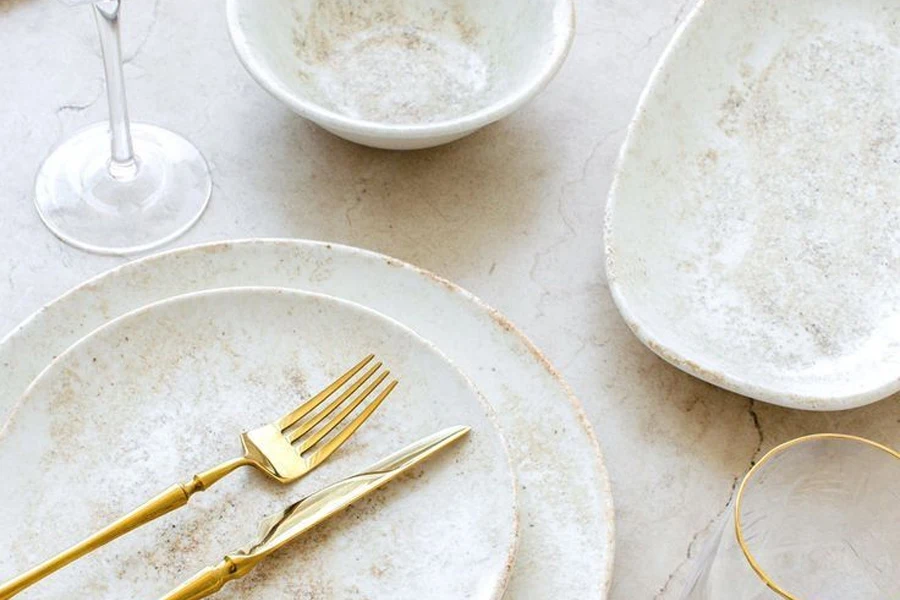
Design and functionality
The intersection of design and functionality in dishes and plates is a testament to the industry’s innovation. Design trends in this realm often reflect broader lifestyle and aesthetic movements, influencing not just the look but also how these items fit into the consumer’s daily life. The current trend leans towards multifunctional designs that blend seamlessly with a variety of dining contexts. This includes plates with raised edges to prevent spillage, bowls designed for both traditional and modern kitchens, and dishes that are both microwave and dishwasher safe, offering convenience and durability.
Furthermore, the aesthetic aspect of design cannot be overlooked. With an increasing desire for personalized and visually appealing table settings, consumers gravitate towards dishes and plates that express their style and enhance the visual appeal of their meals. The integration of design elements such as color, pattern, and texture plays a crucial role in meeting these desires, with some opting for the bold and vibrant to add a splash of color to their table, while others prefer the understated elegance of monochromatic schemes or the timeless appeal of floral and geometric patterns.
In conclusion, the comprehensive examination of materials and the thoughtful consideration of design and functionality underscore the complexity of selecting dishes and plates that resonate with contemporary consumer preferences. The balance of these elements, aimed at enhancing the dining experience while reflecting personal style and values, remains a cornerstone of the industry’s approach to meeting the demands of a diverse and discerning market.
2. Insights into the current market
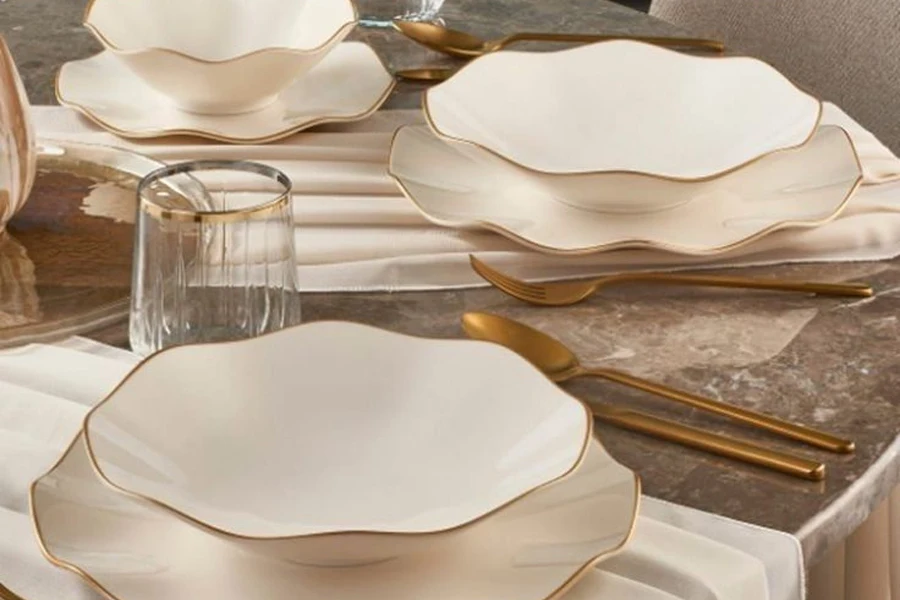
The current market for dishes and plates is undergoing significant transformations, driven by evolving consumer preferences and the relentless pace of innovation in materials and design. These shifts are not just reshaping the landscape of available products but also redefining what consumers expect from their dining ware.
The global market for dishes and plates, as part of the broader tableware category, showcased a significant valuation and projected growth trajectory. Experts valued the global tableware market, encompassing dishes and plates, at $42.52 billion in 2019, with expectations for it to grow at a compound annual growth rate (CAGR) of 6.0% from 2020 to 2025. This growth is attributed to factors such as increasing disposable incomes, changing lifestyles, and expansion within the commercial and hospitality sectors.
Demand dynamics
The demand for dishes and plates today is heavily influenced by a trio of critical factors: sustainability, aesthetics, and durability. Consumers are increasingly mindful of the environmental impact of their purchases, leading to a heightened interest in products made from eco-friendly materials that do not compromise on quality or design. This green imperative goes hand in hand with a desire for dining ware that combines visual appeal with longevity, reflecting a broader trend towards responsible consumption and sustainable living.
Sustainability extends beyond the choice of material, touching on the production processes and the lifespan of the product. Dishes and plates that offer the promise of durability not only stand up better to daily use but also contribute to reducing waste, aligning with consumer expectations for products that last longer and leave a smaller environmental footprint.
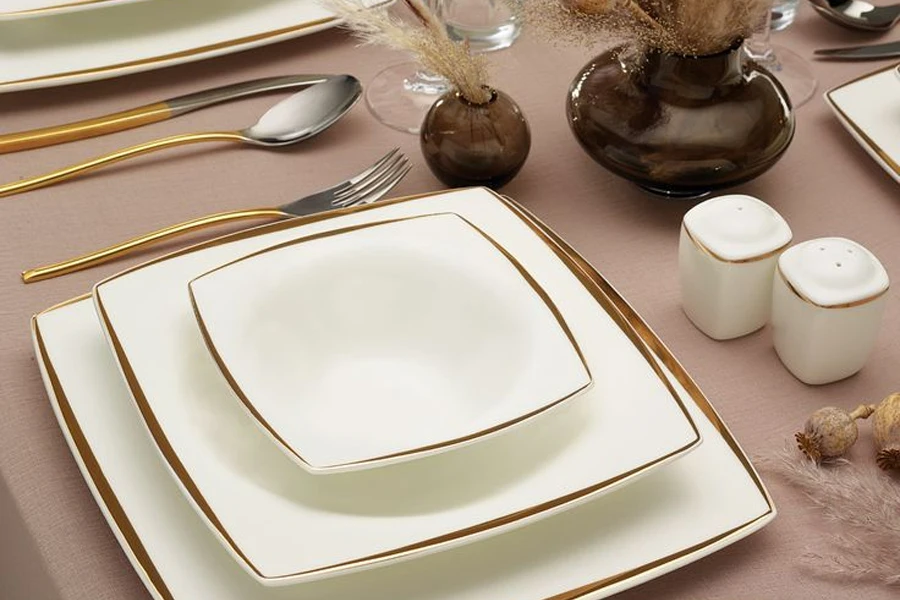
Innovation and trends
The response from manufacturers to these consumer demands has been a wave of innovation in both materials and design. Advances in material technology have introduced a range of new options for dishes and plates, from recycled glass and biodegradable bamboo to advanced composites that mimic the look and feel of traditional ceramics without their environmental drawbacks.
These innovations are not confined to materials alone. Design trends are also shifting, with a clear move towards multifunctional dining ware that fits seamlessly into the diverse lifestyles of modern consumers. From plates that double as lids for storage to dishes designed for both conventional ovens and microwaves, functionality is becoming as important as form. The integration of smart design features, such as non-slip bases or temperature-retaining materials, further underscores the market’s shift towards products that deliver added value beyond their primary use.
The trend towards personalized and customizable dining ware is another notable development, driven by consumers’ desire to reflect their personal style and the aesthetic of their living spaces in their choice of dishes and plates. This has led to an explosion of options in terms of colors, patterns, and textures, enabling consumers to curate their dining ware in a way that complements their interior design choices and personal preferences.
The convergence of these trends—towards sustainability, multifunctionality, and personalization—is shaping a market that is both diverse and dynamic. As the industry continues to evolve, the key for manufacturers and retailers alike will be to stay ahead of these trends, offering products that not only meet the practical needs of consumers but also resonate with their values and aesthetic sensibilities.
3. Essential considerations for product selection
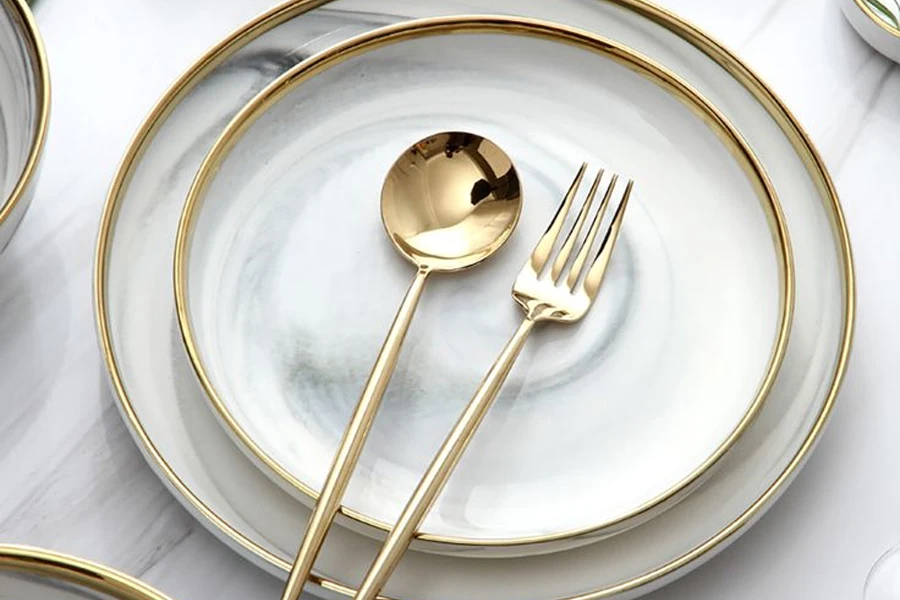
Within the dynamic arena of dining ware, making informed selections hinges on a deep understanding of not just market trends but also the intrinsic qualities that define the durability and appeal of dishes and plates. This knowledge serves as a cornerstone for aligning offerings with the nuanced demands of modern lifestyles and consumer preferences.
Quality and durability
At the heart of product selection lies the imperative to assess quality and durability meticulously. The choice of material plays a critical role, with each offering distinct advantages in terms of resistance to chipping, cracking, and staining. Porcelain and bone china, for instance, are celebrated for their resilience and elegant appearance, making them suitable for both daily use and special occasions. In contrast, stoneware and ceramic options offer a more casual aesthetic but require careful examination for consistency in glaze and density to ensure longevity. Advances in material science have also introduced reinforced glass and composite materials that promise enhanced durability without sacrificing style.
Manufacturing techniques further influence the durability of dishes and plates. High-fired temperature processes result in denser and more durable products, while attention to detail in the finishing touches, such as edge smoothing and glaze application, can significantly reduce the likelihood of wear over time. It is the intricate balance of these factors that defines the long-term value and usability of dining ware, underscoring the need for rigorous assessment beyond mere aesthetic appeal.
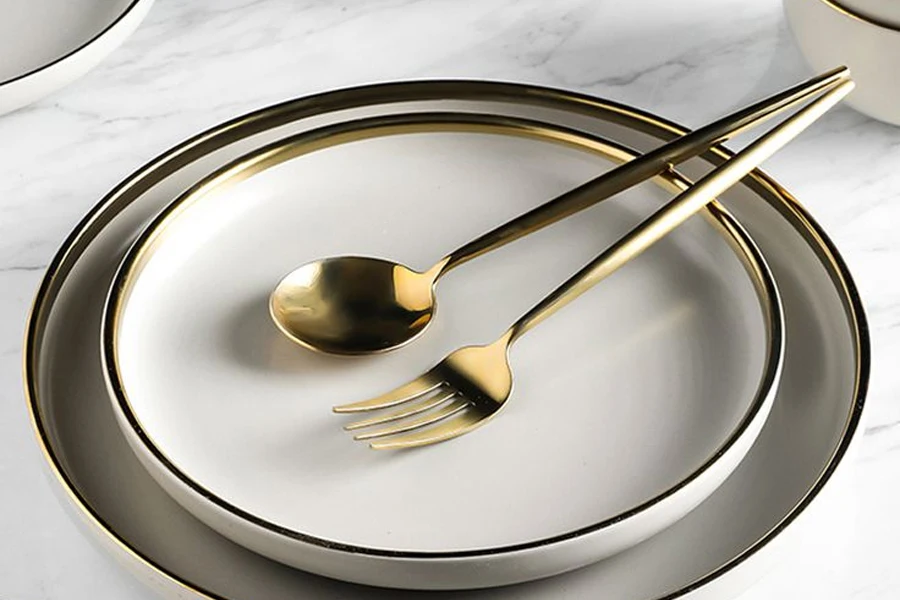
Consumer lifestyle compatibility
Understanding the diversity of consumer lifestyles is pivotal in curating a range that resonates with the intended audience. The spectrum of dining habits, from the fast-paced meals of urban dwellers to the elaborate dinner parties of the socially inclined, demands a versatile approach to product selection. Casual dining sets with a focus on durability and ease of care cater to the needs of families and individuals with demanding schedules, prioritizing functionality without compromising on style. Conversely, for those who relish in hosting and formal dining, the allure of fine china and artisan-crafted pieces reflects a desire for elegance and a statement of personal style.
The compatibility of dishes and plates with modern appliances, such as microwaves and dishwashers, further aligns with the practical aspects of contemporary living. This consideration not only speaks to the functionality of the products but also to the sustainability ethos that prioritizes products designed for longevity and minimal environmental impact.
Market positioning
Strategically positioning product offerings requires a nuanced understanding of market segments and the ability to anticipate shifts in consumer preferences. Identifying niche markets, such as eco-conscious consumers seeking sustainable materials, or tapping into the rising popularity of minimalist design, enables a tailored approach that differentiates offerings in a competitive landscape. The integration of market research, trend analysis, and consumer feedback forms the foundation of a strategic positioning strategy that aligns product features with consumer expectations.
Crafting a narrative around the products, emphasizing their unique qualities and the values they embody, can further enhance market positioning. Whether it is the artisanal story behind hand-crafted ceramics or the innovative use of recycled materials, such narratives resonate with consumers seeking more than just functional items but products that reflect their personal values and lifestyle choices.
Navigating the complexities of product selection in the dishes and plates market demands a comprehensive approach that considers quality, durability, lifestyle compatibility, and strategic market positioning. It is through this lens that professionals in the industry can curate offerings that not only meet but exceed the evolving expectations of their target audience.
4. Leading dishes and plates: Analysis and features
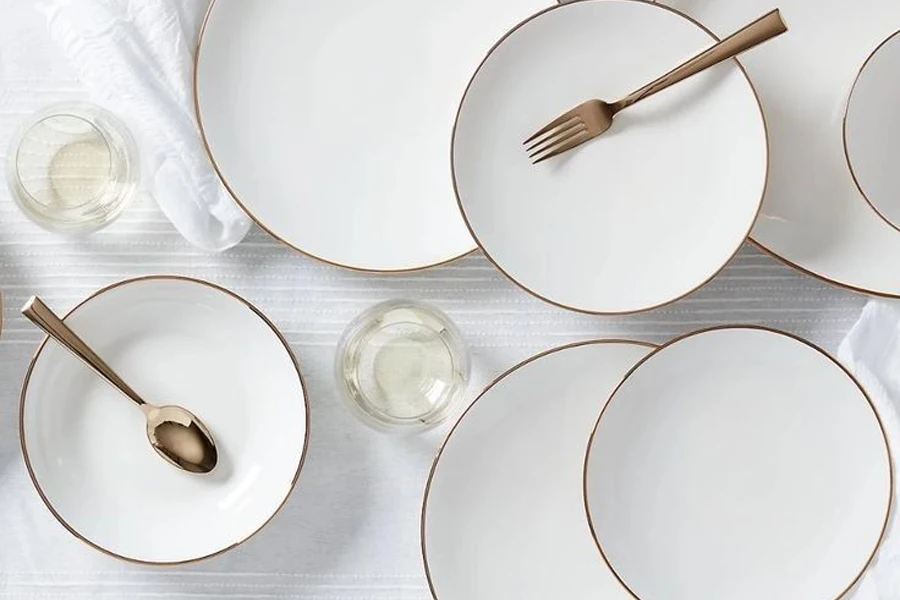
In the realm of dining ware, the distinction between everyday utility and the finesse required for special occasions has given rise to a diverse range of dishes and plates, each designed to meet specific needs. Coupled with an increasing demand for sustainability, this diversity underscores the industry’s response to contemporary consumer preferences.
Best for everyday use
For the everyday dining experience, durability and practicality take precedence. Models crafted from high-quality stoneware or reinforced ceramics stand out for their resilience against daily wear and tear. These materials not only withstand frequent washing and microwave use but also retain their aesthetic appeal over time. Among the top contenders in this category are dishes that offer a balance of weight and robustness, ensuring they can handle the rigors of daily use without compromising on the ease of handling.
Notably, some of the leading everyday use models feature non-porous surfaces to resist staining and odors, an essential aspect for maintaining hygiene and freshness. Their design often incorporates subtle, versatile patterns and colors that blend seamlessly with a variety of kitchen decors, making them a practical choice for households and dining establishments alike.
Top picks for special occasions
When it comes to special occasions, the selection criteria shift towards design sophistication and the use of luxury materials. Exquisite sets made from fine china or bone china are highly sought after for their translucent quality and delicate craftsmanship. These sets often feature hand-painted designs or gold and silver accents, adding a touch of elegance and exclusivity to the dining experience.
The allure of these top picks lies not just in their visual appeal but also in their ability to elevate the overall dining atmosphere, making them ideal for celebrations, formal gatherings, and holiday dinners. Despite their refined appearance, many of these luxury models have evolved to include features that offer convenience, such as dishwasher safety, ensuring they meld tradition with modernity.
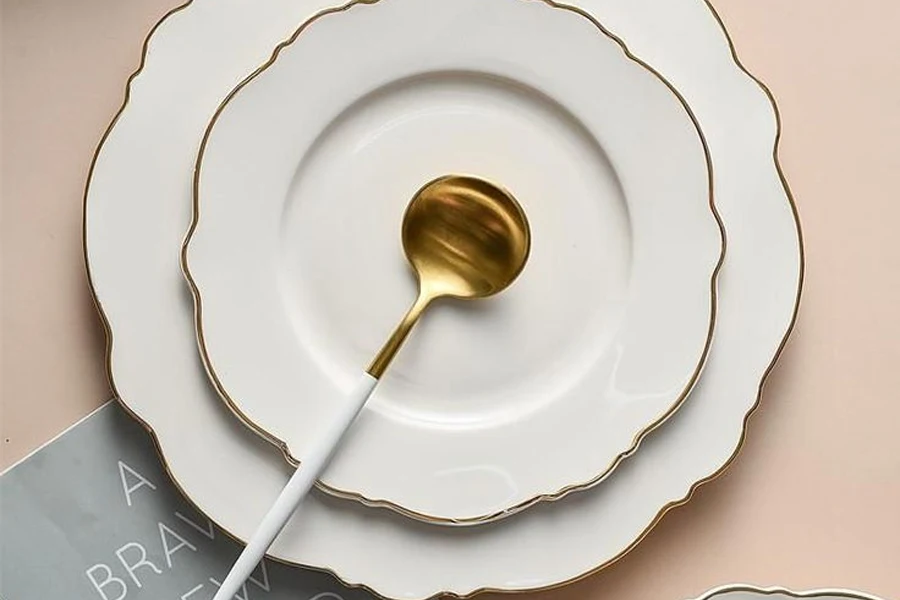
Eco-friendly innovations
In the wake of environmental consciousness, eco-friendly innovations in dishes and plates have captured the market’s attention. Leading the charge are models made from sustainable materials like bamboo, recycled glass, and biodegradable composites. These eco-friendly options do not sacrifice style for sustainability; instead, they boast contemporary designs and vibrant colors that appeal to environmentally conscious consumers.
Moreover, these innovations extend to manufacturing processes that minimize environmental impact, aligning product development with broader sustainability goals. The popularity of these models reflects a growing consumer preference for products that combine ecological responsibility with aesthetic and functional excellence.
The landscape of dishes and plates is a testament to the industry’s adaptability and commitment to meeting diverse consumer needs. From the robustness required for daily dining to the elegance of special occasions and the imperative for sustainability, the current offerings embody a blend of tradition, innovation, and environmental stewardship.
Conclusion
Navigating the dishes and plates market in 2024 demands an acute awareness of evolving consumer preferences, underlined by the quest for sustainability, aesthetic appeal, and unparalleled quality. For those curating selections for diverse lifestyles, from the bustling family kitchen to the elegant dining of special occasions, the challenge lies in harmonizing these elements. This journey into the material nuances, design trends, and innovative eco-friendly options showcases the vast potential for meeting and exceeding consumer expectations, setting a benchmark for thoughtful selection and strategic market positioning in the dynamic landscape of tableware.




